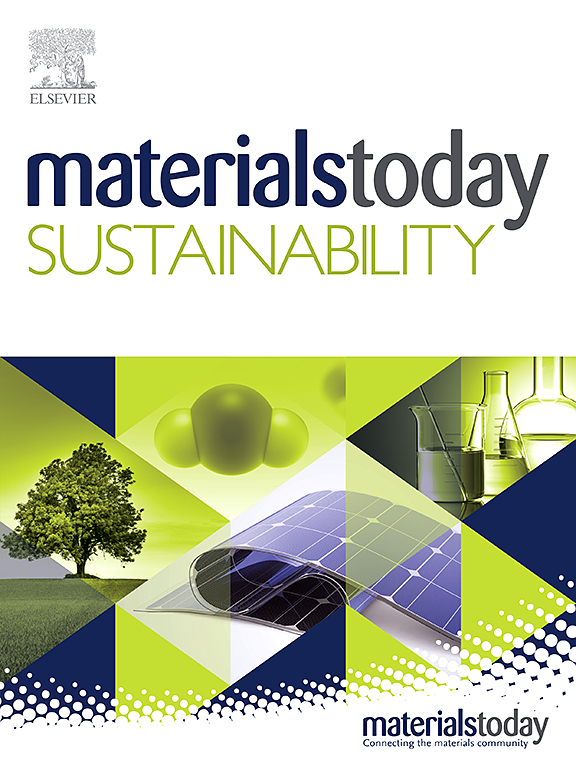Graphitic carbon nitride (g–C3N4)–Based Z-scheme photocatalysts: Innovations for energy and environmental applications
IF 7.1
3区 材料科学
Q1 GREEN & SUSTAINABLE SCIENCE & TECHNOLOGY
引用次数: 0
Abstract
Unique features of graphitic carbon nitride (g-C3N4, gCN) nanocomposites include exceptional chemical stability, ease of manufacturing and modification, spatially segregated photo-induced charge carriers, and feasible redox properties. As a result, they are attracting unusual attention. In particular, the direct Z-scheme heterojunctions (ZSHJ) constructed with gCN exhibit photocatalytic activity and selectivity with applications in the realms of energy and environment. Advances in the synthesis of gCN-based ZSHJ as well as their photocatalytic applications, with emphasis on the decomposition of contaminants in water, production of H2 and O2, and conversion of CO2 to biofuels and biochemical, were highlighted. Insight was provided on the latest developments in gCN ZS photocatalytic materials with the accompanying challenges including the S-scheme photocatalysis. Thus, an in-depth analysis, the limited light absorption range of g-C3N4 and its high rate of charge carrier recombination hinder its efficiency. The structural limitations, including low surface area and insufficient porosity, reduce catalytic activity while ensuring the stability of Z-scheme interfaces and preventing back electron transfer remains complex. Moreover, scaling up production and achieving cost-effective synthesis are ongoing hurdles. Addressing these challenges requires innovations in bandgap engineering, composite formation, and morphology control, along with the development of green and scalable synthesis methods.

基于石墨氮化碳(g-C3N4)的z型光催化剂:能源和环境应用的创新
石墨氮化碳(g-C3N4, gCN)纳米复合材料的独特特点包括优异的化学稳定性、易于制造和改性、空间分离的光诱导载流子和可行的氧化还原性能。因此,它们吸引了不同寻常的关注。特别是用gCN构建的直接z型异质结(ZSHJ)具有良好的光催化活性和选择性,在能源和环境领域具有广泛的应用前景。重点介绍了基于gcn的ZSHJ的合成及其光催化应用的进展,重点介绍了水中污染物的分解、H2和O2的产生以及CO2转化为生物燃料和生物化学。介绍了gCN ZS光催化材料的最新发展,以及随之而来的挑战,包括s方案光催化。因此,深入分析,g-C3N4有限的光吸收范围和较高的载流子复合率阻碍了其效率。结构限制,包括低表面积和孔隙度不足,降低了催化活性,同时确保Z-scheme界面的稳定性和防止反电子转移仍然很复杂。此外,扩大生产和实现具有成本效益的合成是持续存在的障碍。解决这些挑战需要在带隙工程、复合材料形成和形态控制方面进行创新,同时发展绿色和可扩展的合成方法。
本文章由计算机程序翻译,如有差异,请以英文原文为准。
求助全文
约1分钟内获得全文
求助全文
来源期刊

Materials Today Sustainability
Multiple-
CiteScore
5.80
自引率
6.40%
发文量
174
审稿时长
32 days
期刊介绍:
Materials Today Sustainability is a multi-disciplinary journal covering all aspects of sustainability through materials science.
With a rapidly increasing population with growing demands, materials science has emerged as a critical discipline toward protecting of the environment and ensuring the long term survival of future generations.
 求助内容:
求助内容: 应助结果提醒方式:
应助结果提醒方式:


